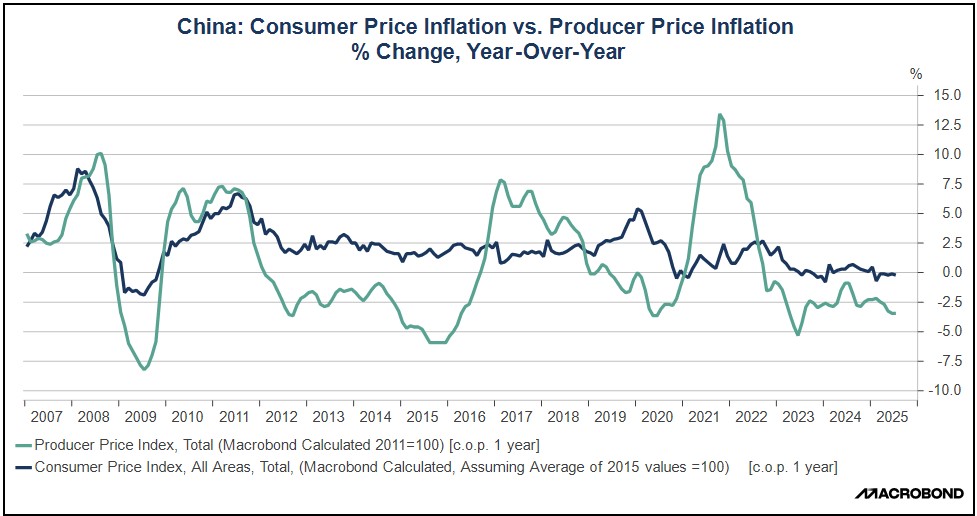by Patrick Fearon-Hernandez, CFA, and Thomas Wash
[Posted: 9:30 AM ET] | PDF
Our Comment will begin by exploring how a potential Fed leadership shakeup could influence monetary policy. From there, we turn to other critical market developments, including the implications of the Trump-Putin talks, Poland’s investor-friendly reforms to spur domestic equity demand, and fresh signs of AI’s accelerating momentum. We wrap up with an overview of additional global and domestic factors shaping the financial landscape.
The New FOMC: President Trump has indicated that he is nearing a decision on nominating a new Federal Reserve chair to succeed Jerome Powell, whose term expires in May — or potentially sooner. Among the leading candidates under consideration are Kevin Hassett (chair of the Council of Economic Advisers), former Fed Governor Kevin Warsh, and current Fed Governor Christopher Waller. Other potential contenders may include FOMC members Michelle Bowman and Philip Jefferson.
- The president’s upcoming selection for Federal Reserve chair will mark his second appointment to the FOMC. His recent nomination of Stephen Miran to replace Adriana Kugler on the Federal Reserve Board represents his first FOMC selection this term. During his previous administration, he appointed Michelle Bowman and Christopher Waller to the committee.
- If elected, President Trump’s Fed chair nominee would fill one of four vacant governor seats on the seven-member board, giving his appointees voting control over monetary policy. This shift could significantly influence the central bank’s decision making and potentially reshape its policy approach.
- A potential theme emerging from this shift is a return to a more accommodative monetary policy. Treasury Secretary Scott Bessent has mentioned that the Fed should consider a 50-basis-point rate cut in September, with an additional 150 basis points of cuts expected by the end of the easing cycle.
- The potential for the Federal Reserve to adopt a more accommodating policy, with the possibility of rate cuts, would typically be a positive signal for bond prices. However, a long-term rally — especially for bonds with longer maturities — may be hampered by investor uncertainty about future inflation.
Trump-Putin Meeting: Trump has issued a warning to the Russian president, stating that Putin will face severe consequences if he does not agree to a ceasefire. These remarks follow the US president’s meeting with European leaders, where they discussed his upcoming one-on-one meeting with Putin. The discussion reportedly focused on ensuring that any potential agreement would be fair to all parties including Ukraine.
- Ahead of the meeting, reports indicate that Russian forces have been making tactical advances in eastern Ukraine. This battlefield momentum may be influencing Putin’s negotiating position, as some analysts believe he will use these gains to seek favorable terms for a peace agreement.
- However, Russia’s tactical advances on the battlefield have come at a significant cost to its economy. While the country’s GDP has grown, this expansion has been heavily reliant on military spending. The budget deficit has widened considerably, driven by increased defense outlays and a recent decline in oil and gas revenues. This has led some analysts to express concerns about a looming debt crisis.
- Although the White House has tempered expectations for the meeting, we remain cautiously optimistic that President Trump’s upcoming talks with President Putin in Alaska may establish a pathway toward a ceasefire. We believe that progress in the conflict would likely be supportive of European asset prices.
Pharmaceutical Tariffs: The US could impose tariffs on pharmaceutical imports within weeks, according to Commerce Secretary Howard Lutnick. This follows a Section 232 investigation launched by the Trump administration, which cited national security risks due to reliance on foreign drug suppliers. While President Trump has floated rates as high as 250%, the plan may begin with lower initial tariffs and gradually escalate them over time.
Polish Reforms: The Polish government is seeking to generate interest in its domestic equity markets to boost economic growth. A recent proposal, the Personal Investment Account (OKI), would introduce a new savings account that eliminates the 19% capital gains tax on investments up to 100,000 PLN ($27,350). The initiative aims to encourage a greater number of households to invest in the country’s equities.
China Property Crisis: Beijing is considering a plan for central government-run firms to purchase unsold homes from property developers. This move is the latest attempt by China to support its struggling real estate market, which has been a major drag on the economy. The initiative underscores the ongoing challenges that China faces as it tries to rebalance its economy away from a reliance on debt-fueled property development.
France Debt: Investors are growing concerned about France’s widening deficit, which has caused the interest rate on French bonds to rise. This has led to a narrowing of the spread between French and Italian bonds, as Italy has simultaneously improved its own debt outlook, making its bonds more attractive. We are closely watching these interest rates in Europe to understand how the region will adapt to the coming era of increased government debt.
Wealthy Stay in UK: The UK’s crackdown on non-dom tax status hasn’t caused the mass departure of wealthy foreigners that many had feared. Early payroll numbers show that Chancellor Rachel Reeves’s budget plan didn’t scare away as many people as some stories suggested. This is good news for the UK as it tries to fix its budget.
AI Demand: Foxconn, a Taiwanese equipment manufacturer, has forecast that its server business will generate more revenue than its smart electronics division in the third quarter. This projected shift underscores the resilience of the AI rally, as optimism around technology continues to outweigh trade concerns. This strong demand for AI-related hardware will likely lead to a further increase in tech stock valuations.



